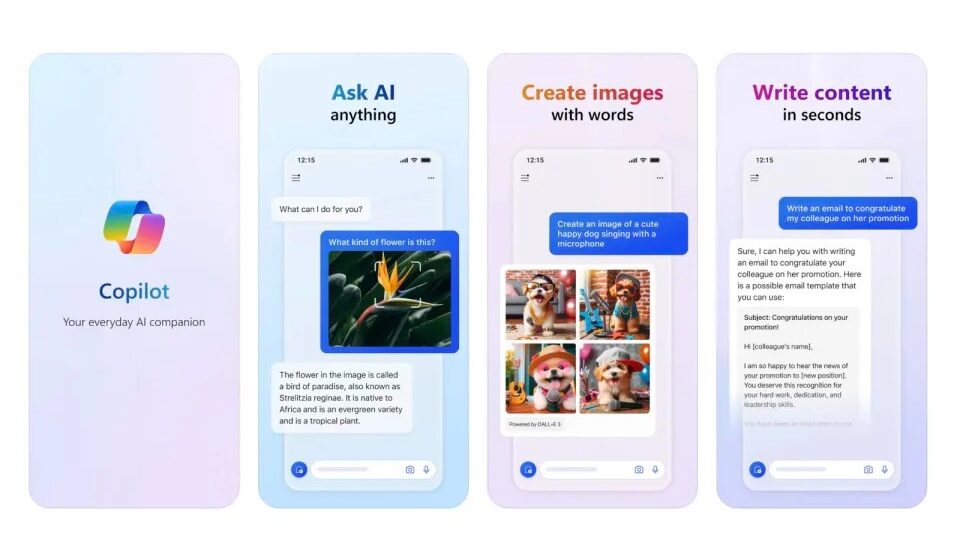Move over Siri and Alexa – there’s a new AI sheriff in town. Microsoft’s Copilot, already a rising star in the desktop chatbot realm, has officially landed on iOS, bringing its powerful language processing and creative chops to iPhones and iPads. But in a landscape already dominated by established players like ChatGPT and Google Assistant, can Copilot carve out its own throne, or will it get lost in the digital dustbin?
GPT-4 vs. ChatGPT-3.5: A Battle of AI Brains
One of Copilot’s biggest weapons is its AI engine. Powered by OpenAI’s GPT-4, the latest iteration of their revolutionary language model, Copilot boasts superior capabilities compared to the ChatGPT-3.5 engine used by the free version of its rival. This translates to more nuanced responses, a deeper understanding of context, and the ability to generate a wider range of creative text formats, from poems and code to scripts and even musical pieces.
Words Transform into Images with DALL-E 3
But Copilot doesn’t just excel at words – it’s also a master of visuals. Integrated with OpenAI’s DALL-E 3, a cutting-edge text-to-image AI system, Copilot can transform your text prompts into stunning artwork. Gone are the days of vague, pixelated outputs; DALL-E 3 promises images that accurately capture your vision, even for complex elements like human hands.
Unleashing Creativity in a Task-Focused World
Copilot’s focus on creative exploration is refreshing. Unlike some chatbots designed for specific tasks, Copilot encourages you to unleash your inner artist, writer, or programmer. Imagine collaborating with AI to brainstorm song lyrics, sketch product designs, generate code snippets to jumpstart projects or bring any abstract ideas to life. The possibilities are as endless as your imagination.
However, in a world where convenience reigns supreme, Copilot’s free-form approach might leave some users wanting more structure. Unlike Alexa guiding you through everyday tasks like setting alarms, Copilot doesn’t yet offer that level of practical integration. While its creative potential is undeniable, it remains to be seen if users will embrace it alongside existing, task-driven assistants.
The Privacy Puzzle: Building User Trust
Of course, the rise of powerful AI chatbots brings challenges around privacy. Microsoft assures users that Copilot data remains anonymized and adheres to ethical guidelines. However, given data breaches and targeted advertising practices today, it’s natural to ask: Who truly owns our words when we feed them to AI? Finding the right balance between innovation and user trust will be crucial for Copilot’s success.
The Verdict: A Fierce Contender, But Far From Victorious
In the end, Copilot brings compelling capabilities to the table. Its fusion of OpenAI’s technology with a focus on collaborative creativity sets it apart. While unlikely to immediately dominate bulkier assistants optimized for menial tasks, Copilot may become essential for creators, sparking new innovations across industries. One thing is certain – the battle for supremacy is heating up. And Copilot’s crash landing onto iOS signals that the AI chatbot wars have only just begun.
What potential do you see for Microsoft’s Copilot? How can it avoid getting lost in the expanding chatbot landscape? Share your thoughts below!










Add Comment